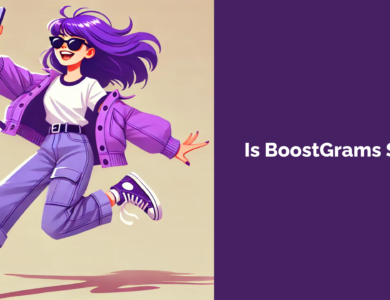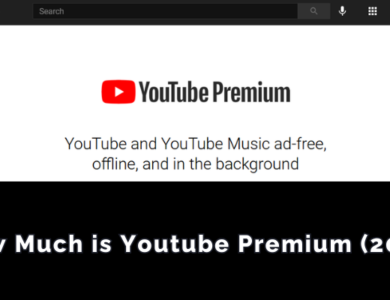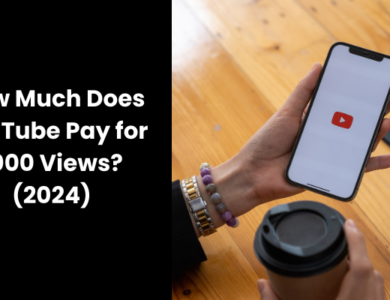How to Cite a YouTube Video

YouTube stands as a vast repository of knowledge, offering insights across countless subjects. From educational tutorials to expert interviews, the platform serves as a critical resource for researchers, students, and professionals alike. However, with the wealth of information comes the responsibility of acknowledging these digital contributions accurately. Citing YouTube videos correctly in your work not only lends credibility to your arguments but also respects the original creators’ intellectual property rights. This guide aims to demystify the process of citing YouTube videos, ensuring that your references are both valid and ethically sound.
Contents
The Importance of Citing YouTube Videos
Citing YouTube videos is more than a mere formality; it’s a critical component of academic integrity and intellectual honesty. In an era where information is abundant and readily accessible, distinguishing credible sources from mere opinion is paramount. YouTube, being a platform that hosts a plethora of content ranging from academic lectures to firsthand experiences, has become an invaluable resource. Proper citation of these videos not only validates your research but also enables readers to trace the origin of the information, ensuring transparency and accountability.

Moreover, citing YouTube content appropriately pays homage to the creators, recognizing their efforts and contributions to the knowledge pool. It helps avoid plagiarism, a grave issue in both academic and professional realms, by clearly delineating your thoughts from those sourced from others. It also adheres to copyright laws, respecting the legal rights of content creators and avoiding potential legal repercussions.
Additionally, proper citation practices facilitate the academic discourse, allowing for the exchange of ideas in a structured and respectful manner. It empowers further research, as accurately cited sources can lead others to explore the original content, broadening the scope of discussion and fostering a community of learning. In essence, citing YouTube videos is indispensable for maintaining the integrity and vibrancy of academic and professional work.
Citation Styles
Navigating the landscape of citation styles is essential for anyone engaged in writing and research. Each style—APA, MLA, Chicago, and Harvard—serves distinct academic disciplines with its own set of rules and preferences for citing sources, including YouTube videos.
APA (American Psychological Association) style is predominantly used in the social sciences. It emphasizes the date of publication, reflecting the importance of recent research in these fields. The APA format typically includes the author’s name, publication date, title, and source.
MLA (Modern Language Association) style, favored in the humanities, prioritizes authorship, reflecting the importance of individual intellectual contributions. Citations in MLA format include the author’s name, the title of the work, the title of the container (e.g., YouTube), the contributors, the version, and the URL.
Chicago style offers two approaches: the Author-Date system, similar to APA, and the Notes-Bibliography system, which uses footnotes or endnotes. It’s versatile, applicable in both the humanities and the sciences.
Harvard style, like APA, uses an author-date citation method. It’s widely used across various disciplines globally, particularly in the UK and Australia.
Understanding and correctly applying these citation styles ensures that your work is appropriately referenced, maintaining academic integrity and facilitating readers’ access to the original sources.

How to Cite a YouTube Video in APA Format
Citing a YouTube video in APA format involves a specific set of guidelines to ensure the citation is both accurate and complete. The essential elements to include are the video creator’s name (acting as the author), the publication date, the title of the video, and the URL where the video can be found. Here’s a step-by-step breakdown:
- Author’s Name: Start with the last name, followed by the initial(s) of the first name. If the creator’s real name is not provided, use their screen name without changes.
- Publication Date: Include the year, followed by the month and day the video was published, all in parentheses.
- Title and Format: Write the title in sentence case, capitalizing only the first word and any proper nouns. Following the title, in square brackets, denote the format as [Video].
- Source: Conclude with the phrase “YouTube” followed by a period.
- URL: Finish the citation with the direct URL to the video.
An example citation might look like this:
Smith, J. (2020, March 5). How to reference correctly [Video]. YouTube. https://youtu.be/XXXXXXX
This format ensures that all necessary information is provided to find the original video, respecting APA’s emphasis on date and authorship.
How to Cite a YouTube Video in MLA Format
Citing a YouTube video in MLA format requires attention to detail to ensure all necessary information is accurately included. The format consists of several components: the author’s name, the title of the video, the title of the website (YouTube), the name of the uploader (if different from the author), the upload date, and the URL. Here’s how you structure it:
- Author’s Name: Start with the author’s name (last name, first name) if available. If the author is unknown or uses a pseudonym, you can use the username instead.
- Title of the Video: Place the video title in quotation marks, followed by a period inside the quotes.
- Website Title: After the video title, indicate the website name (YouTube) in italics.
- Uploader Name: If the uploader is different from the creator, include “uploaded by [uploader’s name],” immediately after the website title.
- Upload Date: Write the date on which the video was uploaded, day month year format.
- URL: Conclude with the direct URL to the video without “http://” to keep the citation clean.
An MLA citation example might look like this:
Johnson, Mark. “10 Easy Steps to Improve Your Photography.” YouTube, uploaded by CameraLover, 15 July 2019, www.youtube.com/watch?v=XXXXX.
This structure ensures the citation is comprehensive, enabling readers to locate the original video easily.
How to Cite a YouTube Video in Chicago Style
Citing a YouTube video in Chicago style can be done in two ways, depending on whether you’re using the Notes and Bibliography system or the Author-Date system. For the Notes and Bibliography system, which is commonly used in the humanities, citations are made in footnotes or endnotes, as well as in a bibliography. Here’s the general structure for a footnote or endnote citation:
- Creator’s Name: Begin with the video creator’s name (if known) or username.
- Video Title: Follow with the title of the video in quotation marks.
- Publication Date: Include the date the video was uploaded, in month day, year format.
- URL: End with the URL where the video can be accessed.
A footnote example would look like this:
- Jane Doe, “How to Bake a Cake,” YouTube video, 10:15, March 14, 2020, https://youtu.be/XXXXX.
For the bibliography, invert the creator’s name (Doe, Jane) and list the source similar to the note but without the URL’s access date.
The Author-Date system, less commonly used for YouTube videos, would reference this in-text as (Doe 2020) and follow a similar bibliography format as noted but includes the access date at the end.
Chicago’s flexibility in citation styles accommodates various types of sources, ensuring that digital content like YouTube videos is cited thoroughly and accurately.
Tips for Effective Citation of Digital Content
When citing digital content such as YouTube videos, accuracy and attention to detail are paramount. Here are some tips for effective citation:
- Verify the Creator’s Name: Ensure you have the correct spelling of the creator’s name or username.
- Check the Upload Date: Confirm the date the video was uploaded, as it is crucial for citation.
- Use the Correct Format: Depending on your citation style, follow the specific guidelines for digital content.
- Double-check the URL: URLs should be accurate and lead directly to the content cited.
- Note the Access Date: For certain citation styles, recording the date you accessed the content may be required.
These practices ensure your citations are reliable and traceable, allowing readers to easily locate the original sources.








